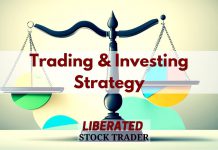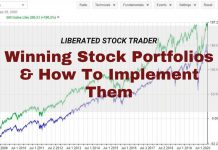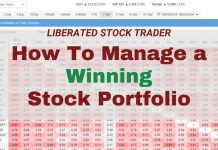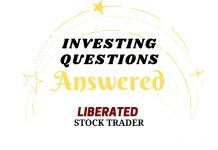★ Investing Strategy Research & Guides ★
- Growth Investing Strategies
- 9 Golden Rules of Long-Term Wealth Building
- 2025 Investment Outlook: What Wall Street Predicts
- How to Screen for Stocks
- 5 Time-Tested Ways to Profit in Stocks
- 7 Top Growth Stock Picking Services Tested
- High Alpha Strategies
- Beta Investing & Trading
- CANSLIM Growth Strategy Investing
- Forecasting Market Returns: 154 Year s of Data
- Cyclical Investing
- Finding Top Growth Stocks
- 5 Smart Ways To Invest Blue Chips
- Sector Investing Guide
- Sector Rotation: Is it Profitable?
- Value Investing – Ultimate Guide
- Dividend & Income Investing Mastery
- Dividend Investing: 10 Pro Tips
- 3 High Yield Dividend Strategies
- 4 Dividend Screening Strategies Tested
- 7 Dividend & Value Stock Strategies
- 5 Dividend Growth Stock Strategies
- Maximizing Dividend Yield
- Expert Dividend Strategies
- Dividend Reinvestment
- Dividend Reinvestment Plans
- Preferred Stock Dividends
- Qualified Dividends
- Index ETF Investing
- Alternative Investments: Gold
- Portfolio Management
- Next Section – Books >>
Stock Portfolio Management
We cover the best strategies to create, build, and manage a stock portfolio to meet your investing goals. Whether you are saving for a car, house or your retirement, this section has you covered.
Invest Better with Two Systems Theory of Behavioral Finance
The two systems theory posits that our brains use two distinct cognitive processes: System 1 (fast, intuitive, and emotional) and System 2 (slow, deliberate, and logical).
8 Steps to Build a Balanced & Profitable Portfolio
To build a balanced investment portfolio, determine how much to invest, your risk tolerance, portfolio allocation, and your investing strategy. Next, choose the right tools to screen and research the ideal stocks and ETFs to enable you to manage your portfolio effectively.
13 Epic Stock Portfolio Examples to Master Investing
Our years of performance testing reveal the world's best-performing stock portfolios are Berkshire Hathaway, CANSLIM, GreenBlatt's Magic Formula, and the FAANG portfolio. We share examples and show you how to implement them.
7 Steps to Managing Your Stock Portfolio Like a Pro
Managing a stock portfolio entails seven crucial tasks: conducting research, analyzing performance, rebalancing holdings, assessing correlations, planning future income, optimizing tax benefits, and analyzing future performance.
How to Ensure Your Portfolio is Diversified & Balanced
A well-diversified stock portfolio should have a low correlation to the broader market. This means that your portfolio won't necessarily follow suit when the broad market goes down.





